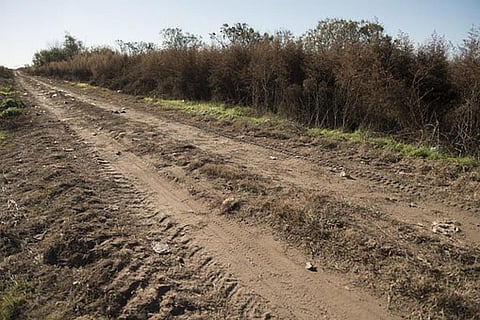World Environment Day 2021: Why we need to restore contaminated land
Many ecosystems are at a breaking point due to mismanagement of resources by anthropogenic activities. The theme for 2021’s World Environment Day — ‘ecosystem restoration’ — signifies restoring degraded or destroyed ecosystems and conserving those which are still intact and integral part of nature.
This is fundamental as thriving ecosystems provide services such as food, water, nutrient cycling, climate regulation, biodiversity conservation and significant sinks of greenhouse gases.
As reported by United Nations Environment Programme, restoration alone can deliver a third of the mitigation by 2030 to keep global warming below 2 degrees Celsius and provide support to societies and economies to adapt to climate change.
Ecosystem restoration can be achieved through 3 Rs: Reclamation, Revegetation and Rehabilitation’. Therefore, in the present scenario, we must ensure that our degraded aquatic and terrestrial ecosystem is restored as soon as possible by adopting appropriate policy and technological interventions.
Nearly 10,000 hectares of precious land have been occupied with municipal solid waste dumpsites, according to Central Public Health and Environmental Engineering Organisation. This poses a threat of irreversible damage to the environment and numerous other health hazards.
As identified by the Central Pollution Control Board (CPCB), more than 3,000 dumpsites in the country need urgent reclamation and rehabilitation. The Swachh Bharat Mission 2 has come up with a specific objective of dumpsite remediation.
However, even after 21 years of waste management legislation, a majority of urban local bodies do not have an engineered landfill for disposal of inerts and residual solid waste (generated from the waste processing units) and appropriate segregation and treatment mechanism to manage their municipal waste.
As a result, most of the waste is being disposed of without being treated.
In addition, CPCB has also identified and confirmed 112 contaminated sites which are required to be reclaimed and restored. These contaminated sites are “delineated areas in which the constituents and characteristics of the toxic and hazardous substances, caused by humans, exist at levels and in conditions which pose existing or imminent threats to human health and the environment”, according to CPCB definition.
These sites may be found in residential, commercial, agricultural, recreational, industrial, rural, urban, or wilderness areas where the primary contaminants could be heavy metals such as hexavalent chromium; halogenated hydrocarbons; asbestos; phenolic compound; sulphate; chloride, etc.
These sites potentially include production areas, waste storage sites, treatment sites, mine tailings sites, landfills, dumps, and spill sites. Investigation of preliminary data shows that site areas vary from as low as few thousand square meters to over 20 hectares to 49 acres.
Many studies have reported that the major reason behind the contamination of land is un-scientific disposal of hazardous waste, discharge of effluents and dumping of other wastes including waste mixed with municipal solid wastes. Most of these contaminated sites, including waste dumpsites, are not remediated for many years and continue to pose multi-faceted health and environmental threat, including contamination of soil, groundwater and surface water.
Thus, it becomes the state’s responsibility in the larger public interest to safeguard the receptor population from contaminated sites' hazards.
It is essential to note that the remediation of contaminated sites involves cleaning the contaminated media, ie, groundwater, surface water, and sediments, by adopting various in-situ or ex-situ clean-up technologies to achieve predefined remediation target levels for each identified hazardous contaminant.
These site-specific remediation target levels are to be decided for each site, separately adopting either the risk-based assessment approach or standard-based approach. Various factors must be considered before remediation, such as the type of intended future land use and techno-economic feasibility of remediation technology in order to ensure an ecological restoration of the same in future.
Some efforts have been put forward in this domain by the Government of India. Reportedly, a project for remediation of 12 contaminated areas in eight states — Kerala, Madhya Pradesh, Odisha, Tamil Nadu, Uttar Pradesh, West Bengal, Rajasthan and Gujarat — having multiple sites is being executed through CPCB at the cost of Rs 805 crore with 40 per cent funding from National Clean Energy Fund and 60 per cent as a contribution of state governments.
Similarly, capacity building programme is being implemented by the World Bank for building the knowledge base and technical know-how of the state governments to undertake site remediation work.
However, it has been recognised that there has been a lack of experience and expertise in the country on remediation of contaminated sites. Also, the country’s existing institutional and legal framework does not mandate the implementation of liabilities on responsible parties, recovery of costs and execution of remediation works.
Hazardous and Other Waste Management Rules, 2016 and Solid Waste Management Rules, 2016 do mandate the state to protect and safeguard the environment and health hazards arising from improper management of waste with long-term sustainability but there are no clear management strategies defined at national to local level with respect to contaminated sites.
This calls for an urgent need for policy intervention (along with technological) and guiding principles to help the pollution control authorities effectively manage contaminated sites.
Besides identification and assessment of contaminated sites, there is a need for appropriate technological intervention, mechanisms for financial and technical support, upgrading existing disposal facilities, and monitoring and compliance to restore the contaminated sites in the country which will serve the overall agenda of ecological restoration and climate change.



